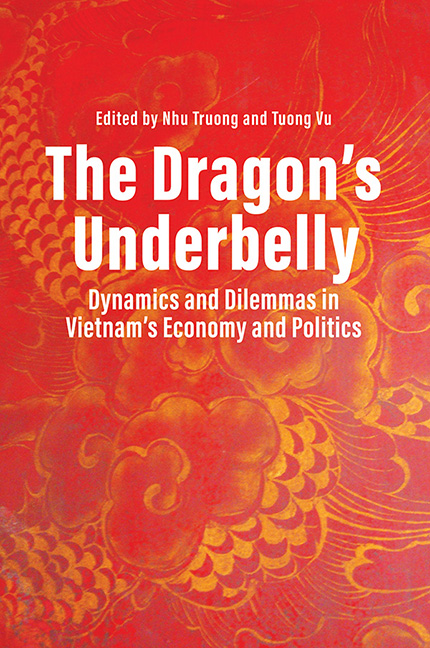Chapter 2 - A Comparative Statistical View of the Vietnamese Economy under Reform since 1985
Published online by Cambridge University Press: 09 January 2024
Summary
As of 2020, Vietnam’s per capita income was estimated to be US$2,400, which is at the middle position of countries in the category of “lower middle income” set by the World Bank (between US$1,036 and US$4,045). While Vietnam’s economy has been widely viewed as a success story, comparatively it is not so successful, and many key features of the country’s economic expansion may not be fully understood. As Table 2.1 indicates, Vietnam achieved much lower growth rates (4.3, 7.4 and 6.6 per cent, respectively) for the three decades between 1980 and 2000 when compared with the growth rates over the three decades of 1960–80 for South Korea (9.5, 10.5 and 8.8 per cent) and 1980–2000 for China (9.7, 10 and 10.4 per cent).
As I will argue in this chapter, there are two main reasons for Vietnam’s lower performance even after its economic reforms. First is the strategy of industrialization that assigns too powerful a “leading role” to the state-owned enterprises (SOEs) at the expense of the private sector. The SOEs have generated corruption and driven up public debt (both for the government and the SOEs) to an extremely high level that almost bankrupted the economy in the early 2000s. Second is the strategy of growth that courts foreign direct investment (FDI) simply for the employment of low-skilled labour instead of focusing on FDI projects that stimulate the development of human capital resources and the transfers and exchanges of knowledge, technologies and skills. As shown in Table 2.12, the foreign invested sector made up a significant share of GDP (22.5 per cent) in 2018, clearly at the expense of the private domestic corporations (10.1 per cent of GDP), although its productivity was even lower than that of the state-owned sector.
This chapter develops a statistical analysis that attends to the following four tasks: (1) to comparatively assess Vietnam’s development through a closer look at Vietnam’s GDP; (2) to examine the views of the ruling Vietnamese Communist Party (VCP) about industrialization; (3) to explore the role of FDI in Vietnam’s economy and the country’s development strategy for it; and (4) to provide a cross-country comparison of Vietnam’s labour productivity in industry.
- Type
- Chapter
- Information
- The Dragon's UnderbellyDynamics and Dilemmas in Vietnam's Economy and Politics, pp. 51 - 72Publisher: ISEAS–Yusof Ishak InstitutePrint publication year: 2022

